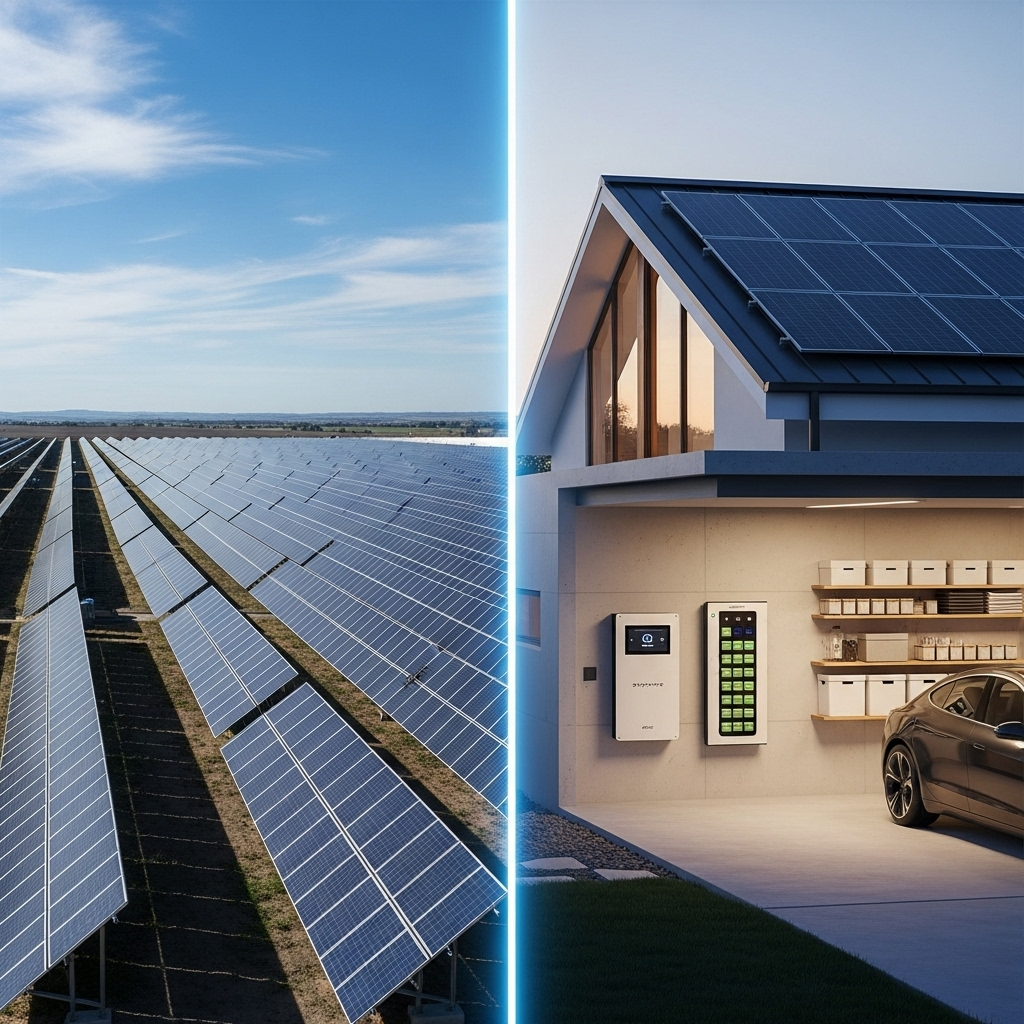Governments worldwide are setting ambitious renewable energy targets, with solar capacity mandates becoming a common policy tool. These mandates require a certain percentage of energy to come from solar power. For project developers and facility managers, meeting these targets is not just about installing more panels. It requires a strategic approach, and at the heart of that strategy lies the Energy Storage System (ESS). A well-designed ESS roadmap transforms a compliance requirement into a powerful asset for energy resilience and cost management.
Understanding Solar Capacity Mandates
Solar capacity mandates are specific targets set by governments to increase the amount of solar energy on the grid. They are often part of a broader Renewable Portfolio Standard (RPS), which dictates the total share of energy that must come from renewable sources. These policies are designed to accelerate the transition away from fossil fuels, improve energy security, and reduce carbon emissions.
What They Are and Why They Matter
Mandates can take various forms, from national goals to local requirements for new construction. For instance, as detailed in an IEA report on Uzbekistan's solar policy, the country set a goal to reach 5 GW of solar power capacity by 2030 to meet growing electricity demand sustainably. These targets create a predictable market for solar technologies and drive investment. For your organization, understanding these mandates is the first step toward developing a compliant and forward-thinking energy strategy. They signal future market direction and create opportunities for early adopters to gain a competitive advantage.
The Challenge of Intermittency
Solar power generation is inherently variable. It produces the most energy during sunny daylight hours, which may not align with periods of peak energy demand. This intermittency can strain the electrical grid. When a large amount of solar power is fed into the grid simultaneously, it can cause voltage and frequency fluctuations. Conversely, when clouds appear or the sun sets, the sudden drop in generation must be balanced by other power sources. This variability is the single largest technical challenge to achieving high levels of solar penetration and meeting capacity mandates reliably.
The Crucial Role of Energy Storage Systems (ESS)
Energy Storage Systems are the key to unlocking the full potential of solar power. By capturing excess energy and deploying it when needed, an ESS smooths out the fluctuations of solar generation, turning an intermittent source into a reliable, dispatchable asset.
Stabilizing the Grid with Stored Solar Energy
An ESS, particularly one using advanced lithium-ion batteries like Lithium Iron Phosphate (LiFePO4), acts as a buffer. It absorbs surplus solar energy when production exceeds demand and injects it back into the grid during peak hours or when solar generation is low. This function, known as 'peak shaving' and 'load shifting,' helps maintain grid stability and reduces the need for expensive fossil-fuel 'peaker' plants. The result is a more efficient, resilient, and clean energy system.
Enhancing Energy Independence and Resilience
Beyond grid services, an ESS provides significant on-site benefits. During a power outage, a solar-plus-storage system can operate independently, providing backup power to critical loads. A case study from the U.S. Department of Energy on New York City's power challenges highlighted how solar systems without storage were unable to provide power during outages. As described in the EERE Success Story, integrating battery backup is critical for creating resilient solar systems that can power fire stations, shelters, and other essential infrastructure when the grid goes down.
Comparing Storage Technologies for Mandate Compliance
Choosing the right battery chemistry is fundamental to your ESS roadmap. LiFePO4 batteries have emerged as a leading choice for stationary storage due to their superior safety, long lifespan, and thermal stability compared to other lithium-ion chemistries and traditional lead-acid batteries.
| Feature | LiFePO4 (LFP) | NMC (Lithium Nickel Manganese Cobalt Oxide) | Lead-Acid |
|---|---|---|---|
| Cycle Life | 4,000 - 10,000 cycles | 1,000 - 2,000 cycles | 300 - 700 cycles |
| Safety | Very High (Stable chemical structure) | Moderate (Risk of thermal runaway) | Low (Risk of gas, acid leaks) |
| Energy Density | Good | Very High | Low |
| Operating Temperature Range | Wide (-20°C to 60°C) | Moderate (0°C to 45°C) | Moderate (-20°C to 50°C) |
| Upfront Cost | Moderate | High | Low |
A Step-by-Step Framework for Mapping Mandates to Your ESS Roadmap
Creating an effective ESS roadmap involves more than just buying batteries. It requires a methodical approach that aligns technology with policy requirements and financial objectives.
Step 1: Analyze the Mandate's Specifics
Look past the headline capacity target. Examine the policy for interim goals, compliance deadlines, and potential incentives or penalties. Does the mandate include specific provisions for energy storage? Some policies offer 'multipliers' or extra credit for dispatchable renewable energy, which directly benefits solar-plus-storage projects. A deep analysis will reveal opportunities to maximize the value of your ESS investment.
Step 2: Assess Your Current and Future Energy Profile
Conduct a thorough audit of your facility's energy consumption. Identify your daily and seasonal load patterns, peak demand times, and critical energy needs. Use this data to forecast your future energy requirements, considering business growth and the potential electrification of fleets or heating systems. This assessment will determine the necessary size and power output of your ESS.
Step 3: Select the Right ESS Technology and Scale
With your energy profile and mandate requirements in hand, you can select the appropriate ESS. For most commercial and industrial applications aiming for long-term value and safety, LiFePO4 technology is a strong contender. The system's capacity (in kWh) should be sufficient to meet your load-shifting and backup needs, while its power rating (in kW) must be adequate to handle your peak loads. For a detailed breakdown of how to evaluate different options, this ultimate reference on solar storage performance offers valuable metrics on cycle life, depth of discharge, and efficiency that are critical for making an informed decision.
Overcoming Implementation Hurdles
Deploying an ESS involves navigating technical, regulatory, and financial challenges. A proactive approach can streamline the process.
Navigating Policy and Regulatory Frameworks
Permitting and interconnection are often the biggest non-economic barriers to solar and storage deployment. As noted in a report on reducing solar soft costs, initiatives that standardize permitting processes can save thousands of dollars per project. Engage with local authorities early to understand grid interconnection standards, building codes, and safety requirements. The IEA's Solar Photovoltaic Energy roadmap also recommends that grid codes be implemented to ensure inverters can provide essential grid services like voltage control and frequency regulation.
Securing Financing and Leveraging Incentives
The financial case for an ESS is strengthened by various government incentives. These can include investment tax credits (ITCs), feed-in tariffs, grants, and rebates for installing storage. A report on concentrating solar power stresses that predictable, long-term incentives are vital for stimulating investment. Explore all available financial mechanisms to reduce the upfront cost and improve the return on investment of your ESS project.
Looking Ahead: Your Strategic Advantage
Aligning your ESS roadmap with solar capacity mandates is a strategic imperative. It ensures compliance, but the benefits extend far beyond that. A properly planned solar-plus-storage system delivers lower energy costs, greater operational resilience, and a smaller carbon footprint. By treating mandates as a catalyst for innovation, you can future-proof your energy infrastructure and position your organization as a leader in the clean energy transition.
Frequently Asked Questions
What is the difference between a solar mandate and a Renewable Portfolio Standard (RPS)?
An RPS is a broad regulation that requires a utility or state to source a minimum percentage of its electricity from renewable resources. A solar mandate, often called a 'solar carve-out,' is a specific part of an RPS that reserves a portion of that requirement exclusively for solar energy, ensuring that solar power plays a significant role in the energy mix.
How do I calculate the right size for my ESS to meet solar targets?
Sizing an ESS involves analyzing your electricity usage data (load profile), the output of your solar panel system, and your specific goals. Key factors include the amount of energy you want to shift from peak sun hours to the evening (in kWh) and the maximum power demand you need to meet at any given time (in kW). A professional energy consultant can perform a detailed analysis to recommend the optimal system size.
Are LiFePO4 batteries the best choice for an ESS roadmap?
For stationary energy storage applications, LiFePO4 batteries are widely considered one of the best choices. They offer an excellent balance of long cycle life, high safety standards (they are not prone to thermal runaway), a wide operating temperature range, and a competitive lifetime cost. While other chemistries may offer higher energy density, the safety and longevity of LiFePO4 make it ideal for commercial and residential ESS.
Can I add an ESS to my existing solar panel system?
Yes, in most cases you can retrofit an ESS to an existing solar PV system. This is known as AC-coupling, where the battery system has its own inverter and is connected to your property's main electrical panel. It allows you to store excess solar energy that would otherwise be sent to the grid, giving you backup power and greater energy self-sufficiency.
Disclaimer: The information provided in this text is for informational purposes only. It does not constitute legal or investment advice. You should consult with a qualified professional before making any financial decisions or implementing any energy strategy.





Leave a comment
All comments are moderated before being published.
This site is protected by hCaptcha and the hCaptcha Privacy Policy and Terms of Service apply.